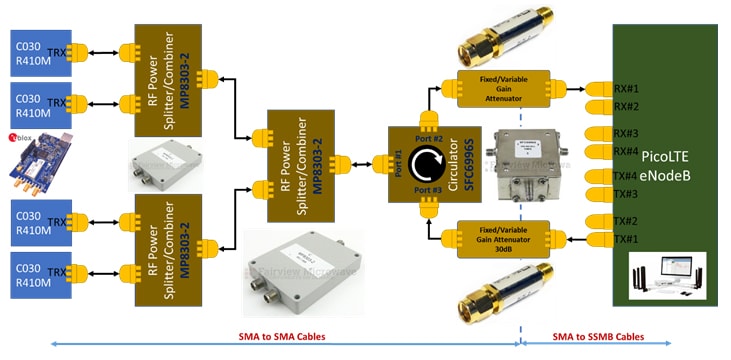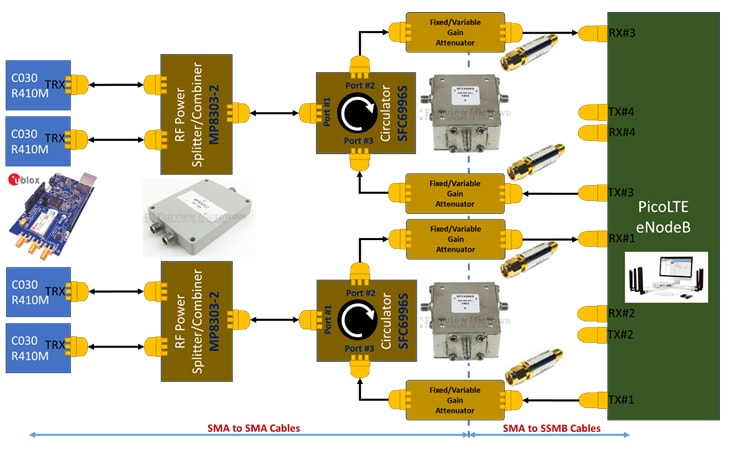Validation of IoT devices equipped with a cellular modem can be a complex challenge. Depending on the development stage, one may focus on validation of the embedded application, on the power consumption, or on radio performance. And to make things worse, the 3 can sometimes be interrelated. For years, the Nutaq PicoLTE has been used for the validation of cellular IoT devices by the mean of over-the-air testing, where the devices communicate with the eNodeB through their antenna and the air channel. But for certain types of tests, the quality of the radio link needs to be perfectly clean or carefully impaired in a controlled way. For these situations, we propose the following two test setups where multiple devices can interact with multiple cells.
Setup #1: 1 Cell and 4 Devices, Contiguous Bands

Setup #2: 2 Cells and 4 Devices, Non Contiguous Bands

In this setup, two circulators are mandatory.
If you enjoyed this article, take a look at:
Application Note: Testing Non-IP Data Delivery with the PicoLTE IoT
Nutaq and BeWhere Join Forces to Present an IoT Demo at Mobile World Congress 2018
